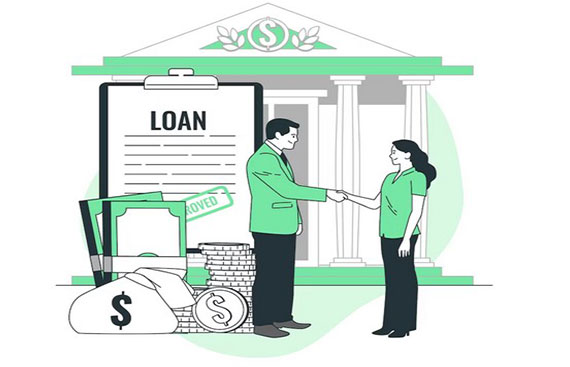Understanding Loan Interest Rates: A Guide for Borrowers

Principal and interest are the two parts of any loan. The principal is the money you borrow, while interest is the cost of borrowing that money. The provision of debt results in earnings for the lender.
Types of Loan
Secured Loans
The borrower of such loans is expected to put up some sort of security in exchange for the loaned funds. If the borrower defaults on the loan, the bank can seize the collateral to make up for the shortfall. These loans provide a far more manageable interest rate compared to their unsecured counterparts.
Unsecured Loans
There is no need to pledge collateral in order to receive an unsecured loan. The bank considers the borrower's credit history, the bank's relationship with the borrower in the past, and other considerations when deciding whether to approve the loan.
Since the lender has no recourse to recoup their losses in the event of a borrower failure, the interest rate on such loans can be relatively high.
What is an Interest Rate?
The amount of interest that will be added to the principal sum by the lending institution will be calculated based on the interest rate. As a borrower, you need to be aware of the many kinds of interest, as there are many different kinds.
What Is the Purpose of Charging Interest on Loans?
Borrowers pay the interest because of the availability of more significant funds at their disposal. While the borrower holds the money, its purchasing power or real value can drop. To cover up for the reduction in the value, the lender charges an interest.
Borrowing Expenses
When you take out a loan, you'll have to pay it back with interest at some point in the future.8 Loans of the same principal amount from multiple lenders will result in different total interest payments due to differences in interest rate and period.
Types Of Interest Rates
Following are the numerous sorts of interest rates:
Constant or Fixed Interest Rate
Throughout the term of the loan, the interest rate will remain unchanged. This is the most prevalent type of interest rate charged, and the rate is set mutually among the borrower and the lender.
There is a clear understanding between the lender and the borrower. It minimizes any chance of borrowing growing pricey. The drawback is that it may be greater than the variable rate of interest currently accessible in the market.
Variable Interest Rate
Interest rates fluctuate with changes to an index or the market rate, which is often referred to as the prime or base interest rate. If the prime interest rate goes up, the borrower's monthly payment will go up as well. In most cases, online payday loans incur this kind of interest.
However, there is always a chance that prime rates will drop after a loan has been approved. Under these conditions, he will receive a lower interest rate than he was initially offered.
Annual Percentage Rate
The annual percentage rate (APR) is the interest rate multiplied by the total loan amount per year. Credit card companies and the credit card payment system widely utilize it. Credit card companies employ this tactic when customers choose to roll over a portion of their bill rather than pay the whole amount due.
Prime Interest Rate
The Prime Rate is the interest rate at which most financial institutions will lend to borrowers with excellent credit profiles. Typically, it's a better deal than the going rate for loans. It is frequently linked to the interest rate set by the Federal Reserve, at which banks can borrow and lend money. Only a select group of VIP customers get access to it.
Simple Interest Rate
Banks and other financial institutions charge customers a simple interest rate on top of the principal loan amount. Multiplying the principal by the interest rate times the number of months yields the final number.
Compound Interest Rate
The interest rate is said to be "compound" when the interest is added to the principal. It is the interest on the interest, to put it another way. There are two key components: the interest rate and the principal balance. The additional interest will be added to the principal balance once all accrued interest has been taken into account.
Discounted Interest Rate
The general public is not eligible to use the discounted interest rate. Federal Reserve Banks can use this to make short-term loans to other banks. Financial institutions may use this type of loan to hide their inability to lend, to address liquidity issues, or to forestall a catastrophe.
Conclusion
The purpose of interest on a loan is to compensate the borrower for the loss in value of the principal. Borrowers typically cover the cost of interest associated with having access to funds quickly. Multiple interest rates are available. You should be aware of the various interest types that may be applied before deciding on a loan.

